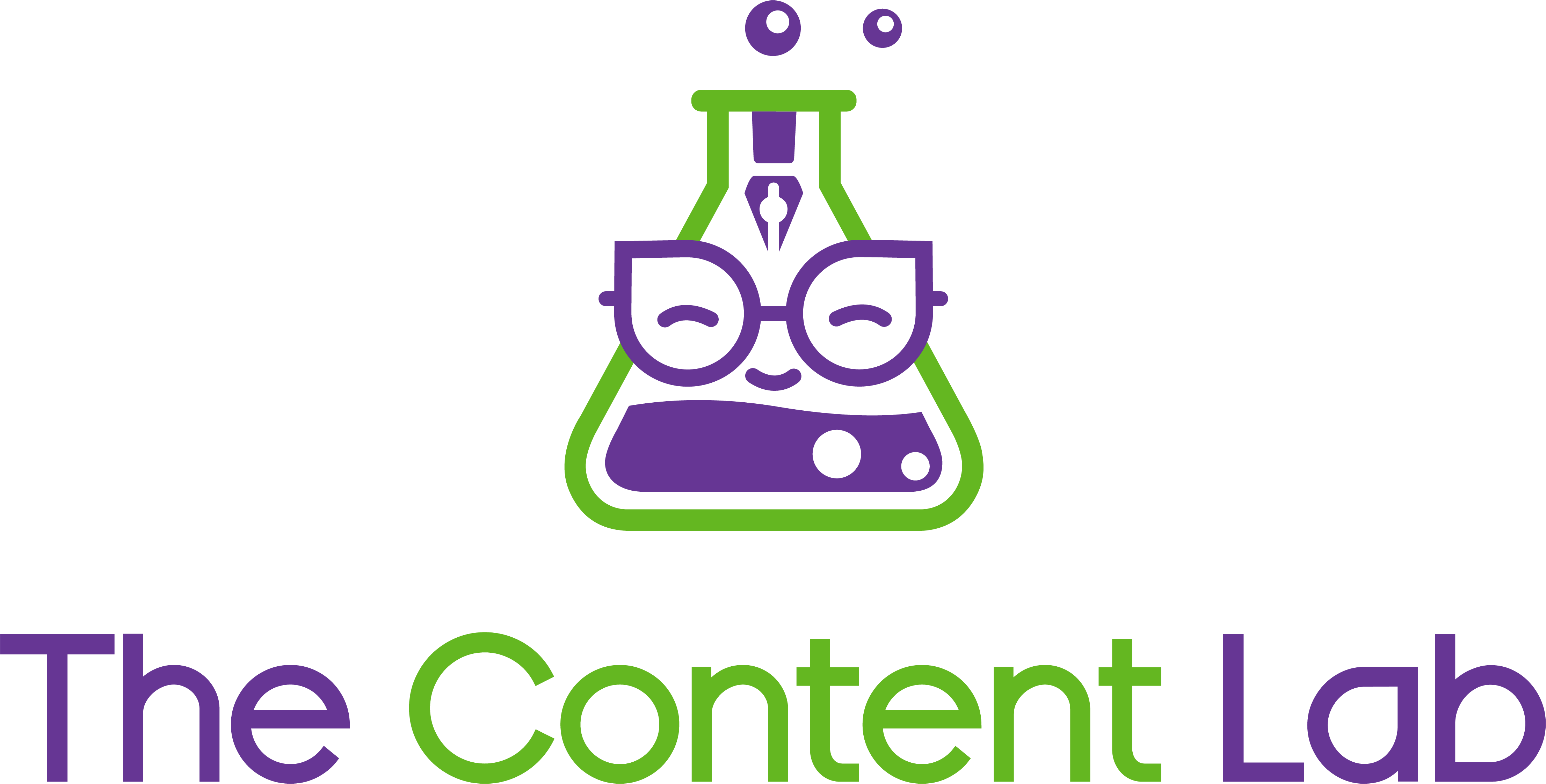We all know content is king in digital marketing. It’s what keeps any business moving online. And with the content marketing industry said to reach a value of $600 billion in 2024, it doesn’t show any signs of slowing down.
It can feel like we’re constantly on the hamster wheel of content production just to keep up. Coming up with new ideas, planning a content calendar, delegating tasks—and then, y’know, actually creating the content… If we let it, it can become a never-ending source of overwhelm.
But I’m here to tell you that it doesn’t have to be. Yes, really! If you’re struggling with your content creation process, we can help.
In this blog, I’ve outlined the top tips to streamline your content creation workflow and get things running a little more smoothly from planning to posting and beyond.
Planning & organisation
The content creation process involves plenty of planning, organisation, and strategy. Firstly, you have to establish clear objectives for your content. What’s the end goal? How does your content fit in with your overall marketing strategy?
Content shouldn’t be mindlessly put out like bargain items on a production line. Each piece should have a purpose and contribute to your business’s goals. Are you looking to drive traffic to your website? Increase engagement or conversions? Whatever it may be, decide what you want the content to do for you…before you start making it.
Let your goals inform the kind of content you create, your strategy for sharing it, and the platforms and channels you’ll share it on.

Create a content calendar
A content calendar will be your best friend when organising your content. This is a schedule that allows your marketing team to plan your content strategy on a daily, weekly, or monthly basis.
That means no more scrambling to pull a new blog idea out of your hat to get some content cooking this week. With a well-planned content calendar, you always know what to make, when to make it, and when it needs to be ready to publish.

At a glance, you can see what content you have lined up for the upcoming weeks and months. It’s organised enough to keep your plans on track, but flexible enough to allow you to move things around a bit. Did some piping-hot industry news just drop? Check your content calendar. It’ll remind you what you’d planned to create and help you make room to fill any gaps in your content creation strategy with relevant posts.
Never made one before? A content calendar template is a good place to start.
Delegate tasks
Okay, you know what needs to be made, and when you need it made by. Now you need to decide who’s doing what.
You know what they say: “No man is an island.” “Teamwork makes the dream work.” (I’m not sure who ‘they’ are, but they sure do come up with lots of sayings. Anyway, you get the gist.) You can’t do it all on your own.
If you’ve got a team to support you, it’s important to delegate some of the tasks in your content strategy to-do list. Not only does assigning tasks take some stress off your plate, but it also makes your team feel more involved in the content creation process.
Share your content calendar with the people on your team who’ll be taking on each task, and provide them with brand guidelines if necessary. Clarity is key here—when you clearly define goals and guidelines, roles and responsibilities, you eliminate confusion and streamline the creation process.
Use templates
Create templates to save you and your content creation team time wherever possible. For example, a template for blog posts could include the basic structure of the blog, plus details like word count, subheadings, and number of images needed.
Templates apply to any type of content you make, whether it’s a blog post, an article, a newsletter, or a series of social media posts.
Combined with your brand guidelines, templates can streamline the content creation process.

With a consistent foundation in place, your team can get creative more quickly, ready to fill in this framework with some quality content.
Repurpose your content
Listen, we should all be recycling more. It’s the right thing to do for our planet. But did you know it’s also the right thing to do with your content?
Think about it. There’s no need to constantly think up fresh, new ideas. That takes up too much of your valuable time.

And sure, you’ve got a content calendar set up to help you get ahead of the curve. But then what? What if the calendar is filling out but the well of inspiration is running dry? Simple: reuse your existing content.
You may think that because you’ve used an idea for an Instagram reel, you can’t use it again—and that’s where you’d be mistaken. You can take the content of your reel and reuse it in the form of an infographic, LinkedIn post, or in your next email campaign.
That’s repurposing your content—taking existing pieces and giving them a new lease on life.
Here’s another example: Say you have a blog post that drove a lot of traffic to your website. Why not take the topic of that blog and turn it into an e-book? Or a podcast episode?
Dusting off older content and turning it into something new can help increase your reach, boost audience engagement, and save you time and money in the long run. Just remember to update any outdated info and adjust the content as needed to make it work best in its new form. Don’t just copy and paste—what works for an email newsletter may not suit a YouTube video.
Make technology work for you
Let’s get this clear: we don’t recommend using AI for the writing process. (Remember Eithne’s blog about this from way back in the day? Yeah, we stand by it!)
That said, there are certain content creation tools that can help simplify your content creation.
Spellcheck tools like Grammarly can be useful for catching any missing punctuation or grammatical errors in your copy. Other AI tools like ChatGPT or OpenAI can come in handy if you’re fresh out of blog or article ideas. These tools can generate ideas for you so you can focus more on writing and less on brainstorming.
But don’t resort to using AI to write all your content thinking it’ll save you time or money. It won’t. Your target audience wants to hear from you, the human mind behind the brand they’ve come to trust. AI-generated content can’t deliver the same level of meaningful connection you can with your audience. They’ll feel the difference, lose confidence in your service, and take their business elsewhere.
In the end, you’ll lose time and money, and you’ll have to spend more of both to recover your losses. Trust us, more and more brands are asking human content creators to clean up the mess their AI content has made.

Review, review, review
Reviewing your content before posting is vital. And the same goes for your overall content creation strategy. It’s important to regularly review your strategy to see what’s working and what isn’t.
Here are a few easy ways to optimise your approach:
- Analyse data: Use analytics tools like Google Analytics to understand how your content is performing. It can help you identify which types of content are working best, which channels are driving the most engagement, and what’s not working as well as you’d like.
- Experiment: Don’t be afraid to try new things! That’s just solid advice in life and also for making content. Try new styles of content and explore new platforms—whatever takes your fancy. You just might stumble across a new way of doing things that works even better for you and your target audience. Again, track the results to find out.
- Communication: Encourage feedback from your content creation team, other teams within your company, and even from your audience. Listen to their opinions to find out what works for them, and to pinpoint areas for improvement. Make any necessary changes based on their evaluations and try again.
And remember, reviewing isn’t something that you do once and then never again. It should be an ongoing practice, an integral part of your content strategy to refine it and smooth out the process going forward.
Need a hand in creating an effective content strategy?
Streamlining content creation might sound difficult, but it doesn’t have to be. Sometimes, it pays to bring in the professionals. Take the whole process off your plate by outsourcing your content creation to our wonderful little team of word nerds.
The Content Lab specialises in human-written, high-quality content. Wonderful websites, brilliant blog posts, and stupendous social media posts (too much? You get the picture). Whatever kind of written content you’re looking for, we’re primed and ready to handle.
And we’re more than content creators. We can help guide your strategy from start to finish to help you get the most out of your content.
Say goodbye to content marketing migraines! Get in touch with Abby, our Founder and Head Content Strategist, to simplify your content creation process today.
Other Posts
 Content Marketing
Content Marketing Think Your Content’s Fine? Try This Content Audit Process and Find Out
 Content Marketing
Content Marketing How One Branding Workshop Can Do What Six Strategy Decks Can’t
 Content Marketing
Content Marketing 

